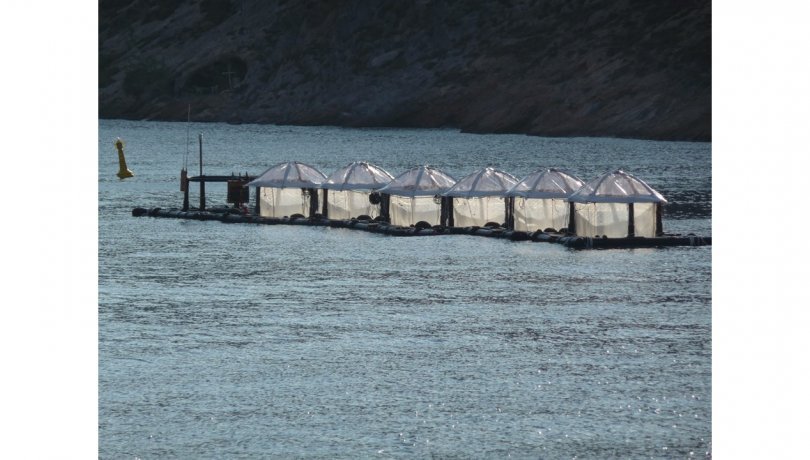A general principle of biology is that all cell membranes are built from phospholipids, i.e. lipids containing phosphorus. Until recently it was thought that these molecules were essential to the functioning of the cell. However, a few exceptions have been discovered in recent years: some higher plants and marine microalgae can substitute their phospholipids with non-phosphorus lipids when the availability of this essential nutrient is low.

A general principle of biology is that all cell membranes are built from phospholipids, i.e. lipids containing phosphorus. Until recently it was thought that these molecules were essential to the functioning of the cell. However, a few exceptions have been discovered in recent years: some higher plants and marine microalgae can substitute their phospholipids with non-phosphorus lipids when the availability of this essential nutrient is low.
Now, a new research study conducted in the Institute of Marine Sciences reveals that, in the absence of phosphorus, marine bacteria are also able to build their membranes with lipids devoid of phosphorus. Not only that; the study indicates that, in response to a shortage of phosphorus, marine bacterial communities of the Mediterranean Sea, one of the poorest regions in the planet in terms of phosphorus availability, remodel their membranes and replace up to 80% of their phospholipids. This process allows them to reuse the phosphorus contained in their membranes and diverge it to the synthesis of other essential molecules for life, such as DNA, which can not be built without phosphorus.
The work has been led by Dr. Marta Sebastian, from the Department of Marine Biology and Oceanography at the ICM, and it has been published this week in the Journal of the International Society for Microbial Ecology (The ISME Journal). Other researches from the UK, USA, France, Czech Republic, Greece and Spain are involved in the study.
The researches first conducted experiments with different marine bacterial strains, and observed that in the absence of phosphorus, these bacteria synthesize different lipids without phosphorus to rebuild their cell membranes. As they explain in the article, the process is reversible: when phosphorus is added back to the growth medium, bacteria synthesize new phospholipids.
The gene PLCP is the key
Phospholipids are composed of fatty acids attached to a glycerol molecule which in turn is attached to the phosphorus molecule. Through genetic manipulation, the authors were able to confirm that the gene PlcP is responsible for breaking the phospholipids so that the phosphorus can be reused by the cell. They further demonstrate that another gene, called Agt is responsible for adding a sugar to glycerol, forming lipids with a sugar head instead of phosphorus (glucolipids).
They have also observed that in the times of the year when there is a shortage of phosphorus, bacteria build their membranes with glucolipids and other lipids that contain sulfur and nitrogen instead of phosphorus, and conclude that the remodeling of lipids is a dynamic process in the environment that responds to changes in the availability of phosphorus.
After analyzing global marine metagenomic datasets derived from the oceanographic cruises Tara Oceans and the Global Ocean Survey, the researchers found that between 60 and 100% of the bacteria living in phosphorus-poor areas of the ocean possess the gene PlcP, which enables this adaptation.
"This means that most of the bacteria in these areas are able to replace their membrane phospholipids, and gives an idea of the ecological importance of this process," says Marta Sebastian. "Our work is an example of how much remains to be discovered about how microorganisms adapt to changes in environmental conditions. Marine microorganisms are essential for the planet, because they are the base of the marine food webs from which fish and marine mammals feed, and they drive global biogeochemical cycles. Thus, knowing how they adapt to the environment is crucial to predict how ecosystems will behave in the future".
Paper
Marta Sebastián, Alastair F. Smith, José M. González, Helen F. Fredricks, Benjamin Van Mooy, Michal Koblížek, Joost Brandsma, Grielof Koster, Mireia Mestre, Mostajir Behzad, Paraskevi Pitta, Anthony D. Postle, Pablo Sánchez, Josep M. Gasol, David J. Scanlan, and Yin Chen. (2015) Lipid remodelling is a widespread strategy in marine heterotrophic bacteria upon phosphorus deficiency. The ISME Journal. doi: 10.1038/ismej.2015.172